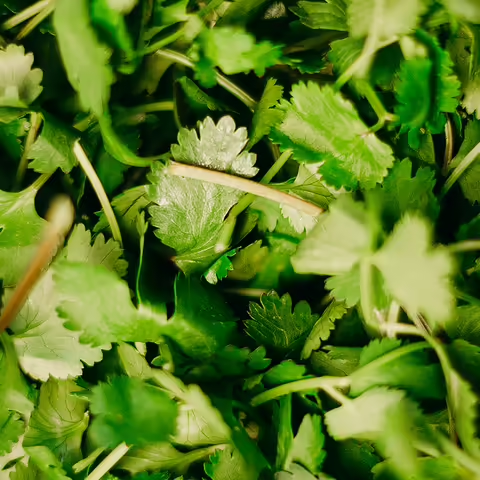Cilantro
Coriandrum sativum
This particular herb can be referred to by two names depending upon which part is harvested and used. If the leaves are harvested it is called cilantro. If the seeds are harvested it is called coriander. Two products, one plant. Cilantro grows one to two feet tall and has finely cut leaves that resemble flat leaf parsley. It has a penetrating odor and flavor.
Growing: Annual
Cilantro/coriander is most often grown for its foliage and not seeds. Cilantro prefers a full sun location and average, well-drained garden soil. It is easily grown from seed that is directly sown in the garden after danger of frost is past. It is difficult to transplant because of its tap root. It has a very short useful garden life and it has a tendency to go to seed (bolt). It is best to make successive sowings every 3-4 weeks to insure a continuous supply of fresh leaves. Cilantro will also self-seed.
Popular Varieties
- ‘Leisure’ – High yielding, uniform growth habit. Heat tolerant and slow to bolt, ready for harvest in 28-40 days.
- ‘Marino’ – High yielding, quick growth, slow to bolt.
- ‘Santo’ – Slow bolting, dark color with a good flavor.
- ‘Pot Cilantro 99057’ – First cilantro developed for pot culture. Direct sow into containers.
Harvest
Entire plants of individual leaves can be cut when plants get to be about six inches tall. If growing cilantro for the seeds allow the flower heads to turn brown and cut the entire plant. Place the plants in a paper bag and store in a cool, dry location. Shake the bag to dislodge the seed pods. Rolling the pods in your hand will release the seeds that can be stored in closed containers. Dry leaves, wrapped loosely in plastic will keep for a week in the refrigerator.
Use
Cilantro is most often associated with Mexican or Asian foods. It is used in salsa, fish and chicken dishes.
